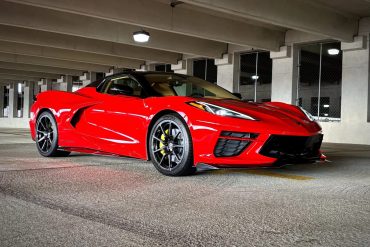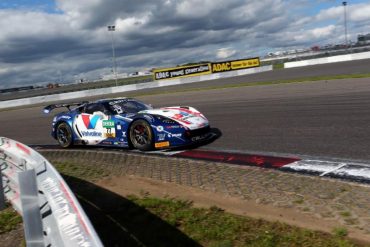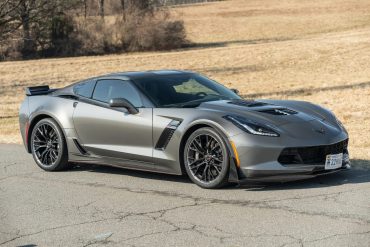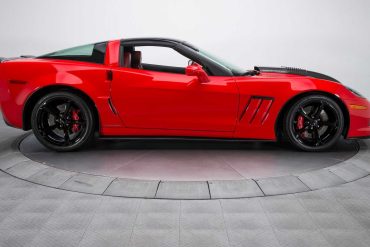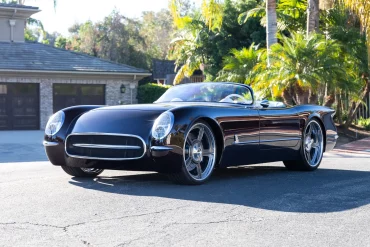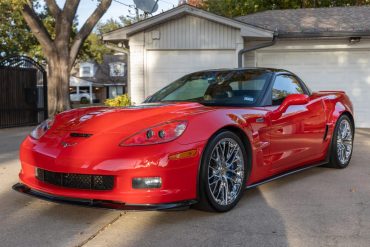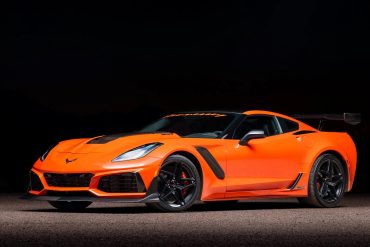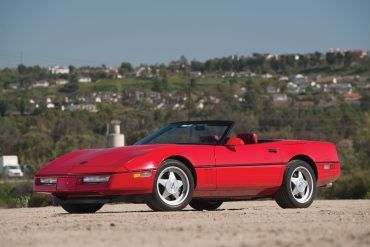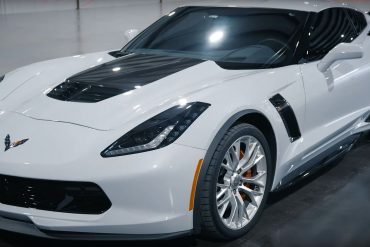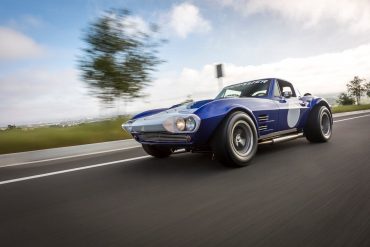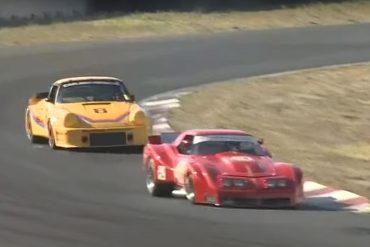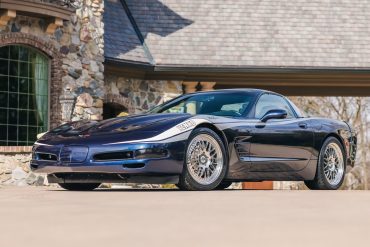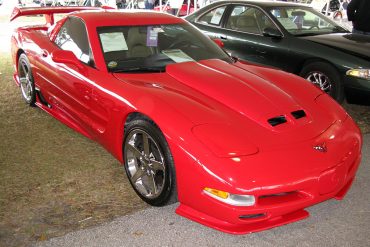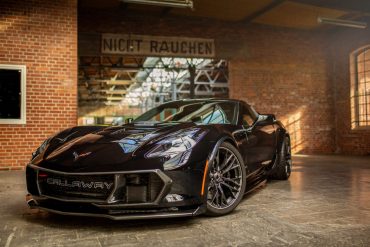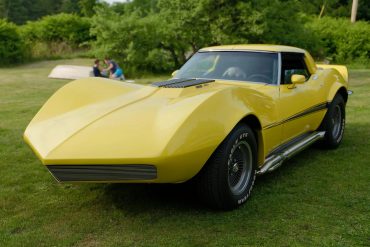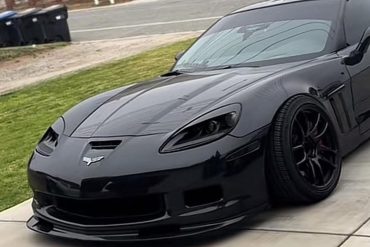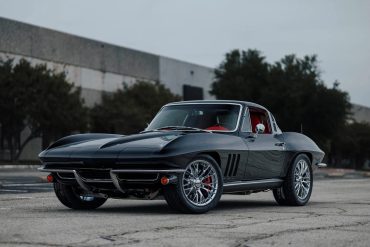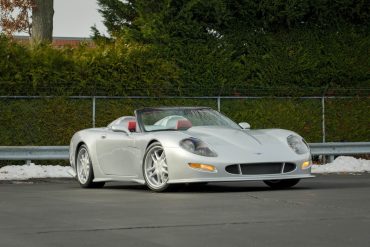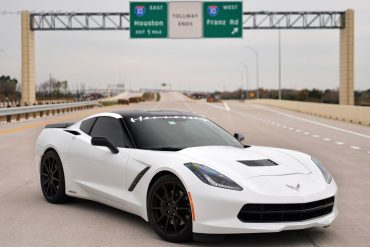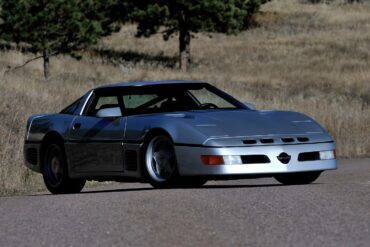As we’ve covered a few times, some shops have been making custom exhaust mods as they prototype out some ideas...
Say hello to the mother of all C8 Corvettes. We’re talking a twin-turbo setup, meaty rear tyes, nitrous – music...
For 35 years, Callaway and the Chevrolet Corvette have forged a legendary bond in performance car engineering. Callaway Cars originated...
Callaway Competition’s in-house racing team took out a Callaway Corvette C7 GT3-R to Hockenheimring to see how it performs on...
In this video, we get to see a 25th Anniversary Callaway Corvette C7 Z06 (a 757-horsepower supercharged monster) being driven...
German Driver Daniel Keilwitz to Pilot Callaway Corvette at Pirelli World Challenge The 2018 Pirelli World Challenge, North America’s top...
When it was released, the ZR-1 was a costly option that would transform conventional Corvettes into a sports car that...
In 2015, the Corvette entered its second year of the seventh generation, bringing back the revered Z06 high-performance package, much...
The 2005-2013 Callaway Corvette was a specialist version of the C6 Corvette, built by Callaway Cars expert craftsmen and sold through selected Callaway/Chevrolet dealers. The 17th “C-Project” undertaken by Callaway first produced naturally-aspirated SuperNatural™ 450, 461, 490 (6.0L) and 550 (6.8L & 7.0L) horsepower Callaway Corvettes. In February 2006, Callaway returned to its positive manifold pressure roots, introducing Callaway “SuperCharged” Corvettes.
If the name sounds familiar, you may have run across Dave Kindig on the reality TV show Bitchin’ Rides, where...
C1 Corvette Modding Guide In the years following World War II, the American automotive scene was in search of something...
The C6 Corvette ZR1, powered by a supercharged and intercooled 6.2L LS9 V8, boasts an impressive 638 horsepower, making it...
The 2019 Chevrolet Corvette ZR1 is the ultimate traditional front-engine Corvette and will forever hold that title as Chevy transitioned...
Offered from 1987 to 1991, the RPO-B2K upgrade was available from any Chevrolet dealer and also Callaway’s first major Corvette...
The excitement surrounding the upcoming 2025 ZR1 never ends, and as the 7.25.2024 reveal date looms, one Texas tuner has...
Live now on Bring A Trailer is a 2019 Chevrolet Corvette Z06 coupe that has received the SC757 Package from...
Hennessey Performance is well known among Corvette enthusiasts. They have made some legendary performance upgrades, and are currently working on...
This 1963 Corvette Grand Sport Is Spectacular For So Many Reasons There are a lot of Corvettes for sale every...
Racing fans and Corvette enthusiasts will surely remember the legendary cars of John and Burt Greenwood, which dominated the racing...
This 2001 Chevrolet Corvette Yenko Wildfire is a one-of-a-kind tribute to Don Yenko. It stands as the sole C5 Corvette...
Not too dissimilar from this fourth generation Greenwood Corvette was this G5R. Again it was a performance resin bodykit that usually came along with a host of performance upgrades. Included was a front splitter, high rise hood, rear tunnel, rear wing, and windshield fairing. Greenwood has always been the leader in high performance aerodynamics and we are proud to offer the finest and most effective designs for your C5 Corvette.
Callaway Competition is the German arm of Callaway Cars Inc., an American specialty vehicle manufacturer and engineering company headquartered in...
Offered for sale on Bring a Trailer is the only known example of the legendary Motion Moray GT—a one-off 1970s...
When I came across a clever C6 modification on a popular Corvette-dedicated Facebook page the other day, I couldn’t resist...
In 1988, only 2,050 of the 22,789 Corvettes produced got the exclusive Z01 35th Anniversary Edition package, with just seven...
This 1965 Chevrolet Corvette restomod is built on an Art Morrison chassis and is propelled by a 6.0-liter LS2 V8,...
In collaboration with IVM Engineering Group, Reeves Callaway created the Callaway C12—a high-performance version of the C5 Corvette for GT2...
Mecum Auctions is currently hosting their annual Indy event, and one of their main attractions is the iconic 1969 Corvette...
Not many cars back in 2014 could boast a 200-plus-mph run on their resumes, but thanks to Hennessey Performance, the...
Based on a 1988 Chevrolet Corvette, the Sledgehammer was designed and manufactured by Corvette aficionado and legend Reeves Callaway. Callaway had already become known...




